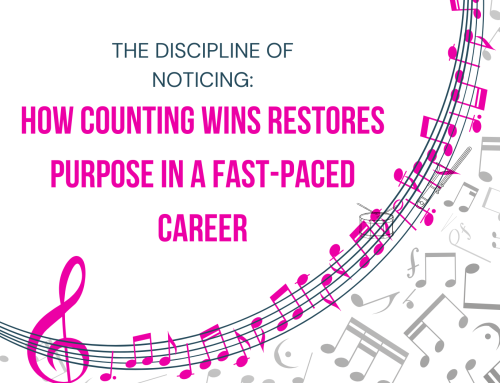by José Valentino Ruiz, Ph.D.
Abstract
This editorial argues that blending robust musicianship with business savvy in music education creates confident, adaptable pros who thrive in today’s creative arts economy, all while keeping it real.
Keywords: musicianship, music business education, experiential learning, self-efficacy, digital tools
Table of Contents
Providing the Context
The music industry’s a rollercoaster—streaming wars, viral TikTok beats, and more side hustles than you can count. Yet, many music business programs remain locked in a static model, emphasizing contracts, copyright law, and marketing strategies while sidelining the very heart of the industry: the making of meaningful, resonant music. Here’s the proposition: it’s time to restore musicianship—the craft of playing, creating, and connecting—to the center of music business education. When paired with real-world entrepreneurial tools, musicianship becomes more than artistic expression; it becomes a foundation for innovation, authenticity, and long-term career sustainability.
Let’s not focus so hard on abstract theory or outdated industry models. It’s about equipping students to thrive in today’s digital-first, culturally fluid music economy—where artistic depth is just as critical as business savvy. It’s about preparing them not only to survive but to lead, to create with intention, and to build lives where artistic identity and economic viability coexist.
So the real question is:
“Could a renewed focus on musicianship be the key to preparing students more fully for the realities of today’s music industry?”
Why Musicianship’s the Secret Sauce
You can’t fake the funk. Musicianship—knowing your scales, shredding that solo, or just feeling the groove—isn’t some bonus track; it’s the whole album. When students nail their craft, they don’t just sound good—they feel good. That confidence is everything, whether they’re pitching a song or haggling over a gig fee. Research backs this up: folks who master their instruments build a kind of self-belief that’s like rocket fuel for tackling the industry’s curveballs (Hallam, 2010). It’s like learning to surf before hitting the big waves—sure, you need to read the tide, but you’ve got to ride the board first. In a world where any kid with a laptop can drop a beat, real skill is your authenticity card. The industry sniffs out posers faster than a dog chasing a taco truck—trust me on that.
Learning by Doing (and Maybe Breaking a Few Strings)
Ever tried picking up a new skill from a slideshow? Yeah, me neither. Music business education needs to skip the snooze-button lectures and get real—hands-on, right-now real. Imagine students in a studio, messing with tracks on a Digital Audio Workstation like Soundtrap, then sorting out how to share it with the world. That’s experiential learning—jumping in, not just peeking from the edge. Research backs it: when kids create music on the spot, they don’t just pick up tricks—they get tougher and smarter (Claure, 2018; Le Roux, 2020; Srivastava & Sinha, 2012; Stoll, 2024). Sure, they might fumble a bit—virtual strings will break—but that’s how you find the rhythm. It’s less about perfect notes and more about building the guts and confidence to turn ideas into action.
Musicianship as Your Startup MVP
Here’s a fresh take: picture your music skills as a project you’re building. You’re in charge, shaping every riff or hook to grab attention. DAWs? That’s your workshop—record, tweak, listen to feedback, and keep refining until it clicks. Studies show mixing tech with know-how keeps you quick on your feet and ready for the market (Cheng et al., 2024; Shelton, 2024). It’s less like a tech startup and more like crafting something people can’t stop humming. Think of it as the musician’s playbook: put it out there, see what hits, and adjust on the fly. Chasing perfection’s a trap—smart moves come from letting the crowd show you what works.
Confidence: The Beat That Keeps You Going
There’s nothing like the buzz of mastering a tough riff or hearing your mix come alive. That’s not just a pat on the back—it’s a jolt of energy. When students work on their musicianship, they pile up small wins that whisper, “You’ve got this.” That confidence—call it self-efficacy if you’re feeling fancy—is worth its weight in gold. It’s what gives them the nerve to shrug off rejection, push through late nights, and dodge those “maybe accounting wasn’t a bad idea” moments (Upitis et al., 2017). Add some business know-how—like pitching yourself or charming a club owner—and you’ve got someone ready for whatever the industry throws. Confidence isn’t about showing off; it’s the quiet rhythm that keeps you steady.
Real-World Wins: Where Art Meets the Paycheck
So, What’s the Big Takeaway?
Musicianship isn’t some forgotten antique—it’s the core of music education, powered by your mind, grit, and heart. It fuels creativity, toughens you up, and keeps you real in a world where plenty just fake it ‘til they make it. Pair that with hands-on learning and a scrappy, startup mindset, and we’re not just showing kids how to play—we’re setting them up to thrive. Educators, step it up—more studios, more DAWs, more “go build something cool” vibes. Industry pros, get in there and guide these talents into folks who master both the art and the hustle. And musicians? Keep working your craft—it’s your key to a career that pays off and keeps you inspired.
Wrapping It Up
The music industry’s moving fast—way too quick for education to lag behind. Blending musicianship with industry know-how isn’t just smart; it’s essential. We’re talking students who can nail a killer solo and close a deal, with the skills to create something dope and the brains to make it pay off—that’s the goal. Forget the tired “art versus business” argument; let’s mix them up like a perfect playlist—art and business, side by side, making each other better. Because the real legacy isn’t just dropping a banger—it’s living a life that resonates, bold and unapologetic.
References
Hallam, S. (2010). The power of music: Its impact on the intellectual, social and personal development of children and young people. International Journal of Music Education, 83, 45–60.




Leave A Comment